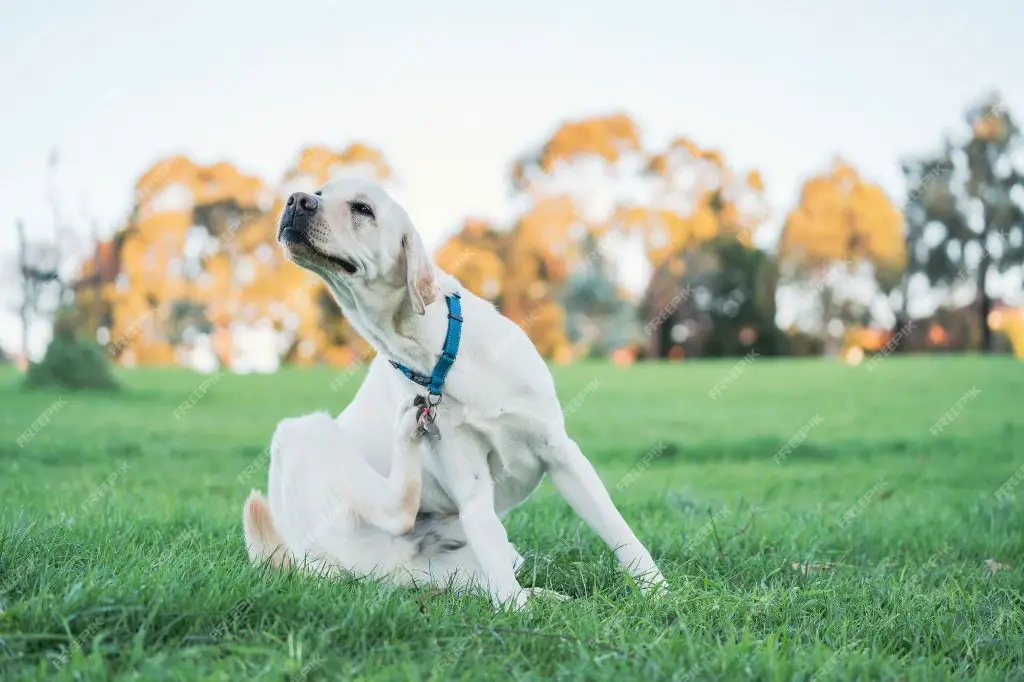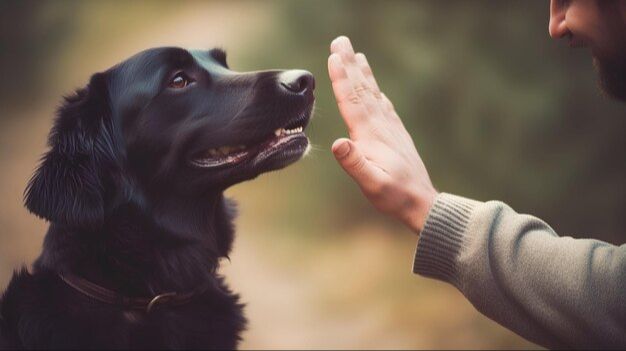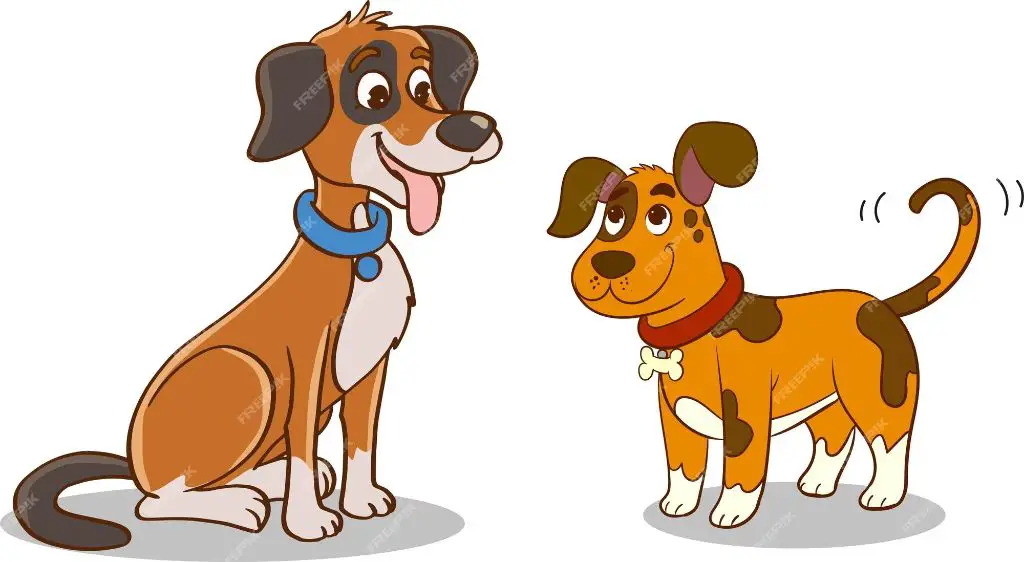Introduction
Pronouns are words that take the place of nouns in a sentence. Some common pronouns are I, you, he, she, it, we, and they. Pronouns allow us to avoid repetition and make sentences flow better. For example, instead of saying “John walked his dog. John threw the ball for his dog. John’s dog brought the ball back to John.” we can say “John walked his dog. He threw the ball for it. Its dog brought the ball back to him.” Pronouns function as substitutes for nouns, making sentences less awkward and clunky.
This article will provide an overview of the different types of pronouns, explain how to use them properly, and discuss how pronouns function in commands and nonverbal communication with dogs.
Subject Pronouns
Subject pronouns are used as the subject of a sentence or clause. They perform the action indicated by the verb. Some common subject pronouns for a dog are:
- I
- You
- He
- She
- It
- We
- They
For example:
- I am hungry.
- It wants to play.
- We like going for walks.
The pronoun “it” is commonly used to refer to animals instead of “he” or “she” since their gender is often unknown or irrelevant in context. For example:
- The dog was hungry so it ate some food.
- It started barking when the doorbell rang.
Object Pronouns

Object pronouns are used as the object of verbs and prepositions. When it comes to dogs and pets, some common object pronouns include:
- Me – “The dog licked me.”
- You – “I threw the ball for you.”
- Him – “We gave him a bone.”
- Her – “I brushed her fur.”
- It – “The cat chased it.”
- Us – “Mom took us to the park.”
- Them – “The pets ate the treats we gave them.”
Object pronouns receive the action of the verb. They complete the meaning of verbs and prepositions in a sentence. For example, “She fed the dog” vs “She fed him”. The object pronoun “him” is receiving the action of the verb “fed”.
Possessive Pronouns
Possessive pronouns demonstrate ownership or a relationship. Just as people say “my dog” or “your dog”, dogs have their own possessive pronouns that they use to communicate.
When a dog refers to their owner or another person who cares for them, they will use possessive pronouns like “my human” or “your human”. This pronoun helps identify the important relationship between the dog and their caregiver(s).
Dogs will also use “my toy”, “my bed”, “my food” to indicate possessions that belong to them. Possessive pronouns help reinforce the bond between a dog and their favorite items.
Understanding how dogs use possessive pronouns provides insight into how they view their relationships and surroundings. Recognizing phrases like “my yard” and “my territory” can help owners better respect their dog’s space and possessions.
Possessive pronouns are a key part of a dog’s vocabulary and play an important role in the pet ownership experience. Paying attention to how dogs use them allows owners to better understand their pets’ perspective.
Reflexive Pronouns
Reflexive pronouns refer back to the subject of the sentence or clause. In human languages, reflexive pronouns end in “-self” or “-selves” (e.g. myself, yourself, itself). Dogs do not have reflexive pronouns in their language, but some of their behaviors could be seen as reflexive in nature.
For example, when a dog scratches itself, it is directing an action back onto itself. The dog is both the subject (the one doing the scratching) and the object (the one being scratched). This could be seen as the equivalent of using a reflexive pronoun like “itself.”

Other reflexive behaviors in dogs include rolling over, chasing their own tail, licking themselves, and sniffing/investigating their own body. While dogs do not actually use reflexive pronouns, these behaviors demonstrate that a dog can be both the subject and the object of an action.
Understanding reflexive behaviors in dogs can help owners better interpret their body language. Actions directed back onto themselves are natural dog behaviors, not necessarily signs of a problem. Being aware of these reflexive actions can also help owners bond with their dog and positively reinforce wanted reflexive behaviors, like self-grooming.
Using Pronouns Properly
It’s important to use proper pronouns when referring to your pet, especially avoiding misgendering them. Pets may not understand pronouns the same way humans do, but using the wrong pronouns can contribute to an environment where your pet feels uncomfortable. Using proper pronouns helps create a safe, welcoming environment for your furry friend.
When you adopt a pet, make sure to learn their sex and use the corresponding pronouns. For female pets use she/her, for males use he/him. Using the wrong pronouns repeatedly when referring to your pet, even if unintentional, constitutes misgendering. This can be harmful to your relationship with your pet over time, as it may undermine the bond of trust. Your pet looks to you for respect and caring.
If you make a mistake and use the wrong pronoun for your pet, just apologize and correct yourself. Using proper pronouns may feel unfamiliar at first, but with time it will become habit. The more you practice addressing your pet appropriately, the easier it will become. Be patient with yourself as you learn.
Setting a good example will help others interact with your pet respectfully as well. Correct guests and family politely if they misgender your furry friend. A simple reminder is usually all that’s needed. When everyone uses the right pronouns, it contributes to a safe and welcoming environment for a pet to thrive.
Pronouns in Commands
Using the proper pronouns in training commands is crucial for your dog to understand what you want them to do. Here are some examples of using pronouns correctly when giving your dog commands:
-
Come here! (Using the imperative form without a pronoun to call your dog to you)
-
Sit down. (Imperative form without a pronoun to tell your dog to sit)
-
Heel! (Imperative without a pronoun to tell your dog to walk close by your side)
-
She’s a good girl! (Using the third person pronoun ‘she’ to praise your female dog)
-
He did it! (Using ‘he’ to praise your male dog for obeying a command)
-
It’s your toy. (Using the pronoun ‘it’ to identify a possession)
-
This is your dinner. (Using ‘this’ to identify something)
Always use your dog’s name and the proper pronouns consistently in commands and praise so they learn to recognize what you want them to do. Be clear, concise and consistent with your pronoun usage when training. With time and practice, your dog will respond reliably to commands that include pronouns.
Vocal Signals

Dogs use a variety of vocal signals and sounds to communicate. These vocalizations can convey a range of meanings and emotions.
Some common vocal signals dogs use include:
-
Barking – Most associated with dogs, barking can mean anything from alarm to boredom to greeting.
-
Howling – Often used to locate other pack members or drawn out when dogs are lonely.
-
Whining – Indicates excitement, anxiety, stress or need. Puppies often whine when in distress.
-
Growling – Used to threaten or warn, but can also show playfulness.
-
Yelping/Yipping – Short, sharp sounds to express alarm, surprise or pain.
-
Grunting/Groaning – Low guttural sounds of contentment or sometimes annoyance.
The tone, pitch, context and combinations of sounds convey nuanced meanings. For example, a low growl signals a warning, while a play bow accompanied by a grumbly growl invites play. Understanding dog vocal signals takes time and careful observation.
Body Language Signals
Dogs communicate a lot through body language and posture. Here are some of the main body language signals dogs use:

-
A wagging tail is a friendly greeting and a sign the dog is excited and happy. Slow wagging shows calmness, fast wagging with butt wiggling often means the dog is very excited.
-
Ears back or flat against the head signals aggression, fear, or submission. Perked up ears show alertness and interest.
-
Rolling over to expose the stomach is a sign of submission and showing they are not a threat.
-
A relaxed, open mouth with tongue hanging out signals a calm, happy dog. Panting helps dogs cool down.
-
Yawning when not tired shows stress or anxiety in dogs. It’s a calming signal.
-
Raising one paw signals hesitation or uncertainty. Dogs may alternate raising their paws when unsure what to do.
-
Play bows with front legs down and butt in the air are an invitation to play and interact.
-
Lip licking or nose licking shows nervousness and apprehension, especially if repetitive.
Paying attention to a dog’s body language helps owners understand their mood and needs.
Conclusion
In conclusion, pronouns play an important role in communicating with dogs. We use pronouns like “you”, “she”, and “it” when giving dogs commands in order to be clear about who or what we are referring to. Understanding possessive pronouns like “my” and “your” also helps dogs identify objects that belong to specific people. Using pronouns properly gives dogs the information they need to follow directions correctly.
Reflexive pronouns like “yourself” are less common in dog training but can be useful for advanced behaviors. And being aware of subject, object, and possessive pronouns allows us to avoid confusion when communicating with our dogs. Paying attention to our pronoun usage helps ensure that our dogs understand exactly what we are asking of them. This makes training more effective and builds even stronger bonds between humans and canine companions.